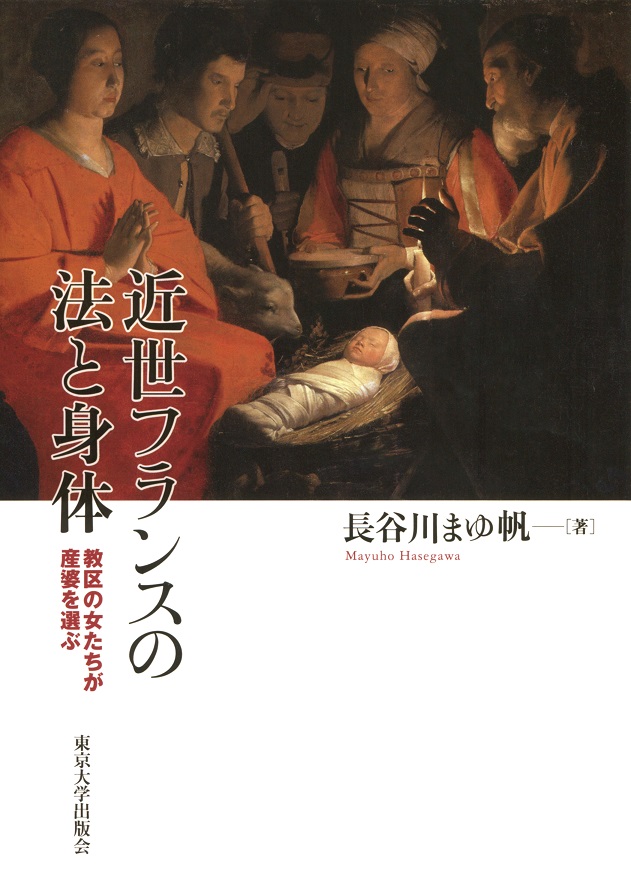
Title
Kinsei France no Hou to Shintai (Parish Women and Their Right to Choose a Midwife in Early Modern France)
Size
496 pages, A5 format
Language
Japanese
Released
February 23, 2018
ISBN
978-4-13-026157-9
Published by
University of Tokyo Press
Book Info
See Book Availability at Library
Japanese Page
Ordinary women, men, and children in the past rarely left their names in history. What had they thought and how had they actually felt during their lives? Even though we learn world history in high school, about the French Revolution, the Industrial Revolution, and the transition of dynasties as major bodies, rarely does our thinking and imagination extend to the real experience of actual human beings. This book covers disputes over the election of midwives in the mountainous areas of southern Alsace in the early 1780s, prior to the French Revolution. This study is, so to speak, a microstoria (microhistory), starting from a micro-scale event and extending to the history as a whole.
Similar disputes had taken place in many villages in southern Alsace. In one case, the controversy was prolonged; in another, the villagers' wives gathered to discuss the situation and petitioned to request the dismissal of new midwives trained at the free school in Strasbourg, which had been established by the intendant of Alsace. The women instead demanded the continued employment of unlicensed women whom they regarded as extremely capable of helping women in labor. In fact, they submitted an appeal to the Conseil d’État of Versailles, the center of the French Kingdom. Such behavior from women farmers of the 18th century was quite rare. According to the representative of the king in this area, the dispute occurred because the government had ignored the custom of choosing a midwife by a majority vote of the wives in the village. However, although found in historical records, it does not appear that such customs actually existed before. Some events of the past were hard to understand well from reading only the documents reported by magistrates. For example, why did the women protest against the new midwives? Initially, it seemed difficult to answer these questions.
Therefore, I focused on the case of Moosch and neighboring hamlets, where I could find many relevant documents, and explored the background and context of this event: the precondition of judicial administration, the bureaucratic system connected to the monarchy’s center at Versailles, and the real situation under the monastery lord system of Murbach since the medieval period, after the annexation to France.
On the basis of these preliminary studies, I paid attention to the circumstances occurring inside and outside of this forested region in the decades prior to the disputes; I traced the expansion of the steel and refinery factory and the installation of the enterprise producing cotton textiles dyed with indigo or madder (i.e., indienne), and found that all these businesses came from outside the region. The steel and refinery factory were treated well by the manor lord Murbach, which deprived the villagers of the right and liberty to use the forest resources. The cotton textile enterprise allowed villagers’ wives and daughters to earn through domestic work, spinning threads from cotton in their households, and the manufacturing of the product. These changes endangered the peace and the traditional order in the village and brought about the fluctuation of gender boundaries, with a rise of unity and awareness among the villagers, together with a rise in anxiety and tension.
Furthermore, I also analyzed the cause of death of women in labor after the new midwives were hired. What kind of midwifery had they learned at Strasbourg? An important key to solving the mystery seemed to be the village women’s obstinate resistance. Accordingly, I tried to detail the changing medical system, the real techniques of midwifery, and the obstetrician’s recognition of the human body in transition. Actually, since the middle of the 18th century, the framework and practices surrounding midwifery and midwives were being excessively restructured by the rise of surgeons in this field. They attained the highest position in the medical academic world, equivalent to physicians educated at universities.
Throughout this book, I make full use of comparative history. In addition, I illuminate controversies around midwifery and its techniques, especially concerning the benefit of using forceps, debated fiercely between surgeons and physicians. A consideration of these controversies permits us to reflect deeply on potential conflicts and hidden power politics. Trust in and expectations for this mechanical metal tool were built up through discourses in journals and books published by surgeons based on their experience of dissection. In reality, in France, forceps began to be rapidly accepted as an effective instrument to help difficult labors since the middle of the 18th century. Incidentally, this examination is based on my previously published books, Travel to Parturient Chairs: Historical Anthropology Concerning Things and Bodies (2004) and Helpful Hand: Advent of Modern Obstetricians and Their Times (2011).
Readers will be guided into the profound history of the era while solving puzzles, as it were. However, uncovering the culprits or judging them is not my purpose. Rather, my aim is to make the world of others in the past visual and understandable to us, even if their world seems at first to be utterly distant from our own.
(Written by Mayuho Hasegawa, Professor, Graduate School of Arts and Sciences / 2018)



 Find a book
Find a book


 eBook
eBook